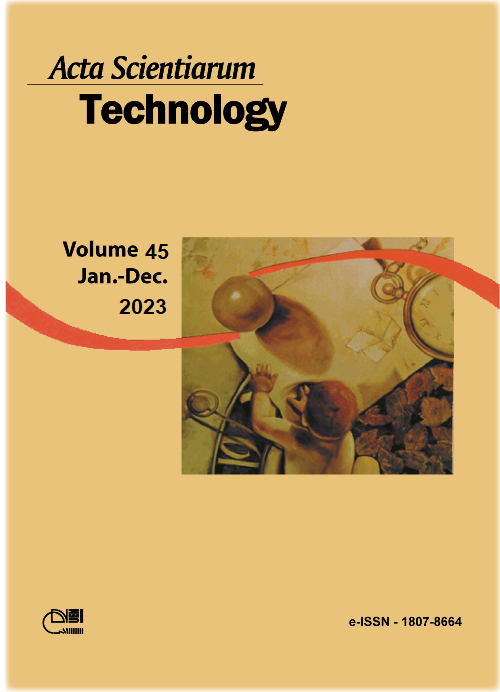Influence of mean value of the modulus of elasticity in compression parallel to the grain on the design of timber trusses
DOI:
https://doi.org/10.4025/actascitechnol.v45i1.58733Palavras-chave:
dicotyledons; mechanical and physical properties; finite element method.Resumo
The Brazilian standard ABNT NBR 7190 (Associação Brasileira de Normas Técnicas [ABNT], 1997) recommends adopting the mean value of the modulus of elasticity to compression in the direction parallel to the grain (Ec0,m) in the calculation of displacements. The values of wood stiffness vary considerably, and they can generate displacements above the limit (L 200-1, where L is the span) established by the referred standard, which contributes to the appearance of pathologies in the structure. To evaluate the influence of the adoption of Ec0,m in the calculation of displacements, mechanical properties of wood species were obtained experimentally. With the aid of numerical models and experimental values, ten types of trusses were analyzed (Porch, Inclined Chord, Top Inclined Chord, Parallel Chord, Bowstring, Fink, Howe, K Truss, Pratt, Scissor), three spans (5, 10, and 20 m) and two species (Hymenolobium petraum Ducke e Hymenolobium sp). Initially, adopting Ec0,m for all members and performing a linear analysis, the maximum loads for the displacement L 200-1 were determined. Subsequently, experimental stiffness values were randomly assigned to each bar, and the maximum displacements were determined through nonlinear geometric analyses. Based on 1260 numerical simulations, deflections of approximately 17% (span of 5 m), 30% (span of 10 m), and 34% (span of 20 m) were observed to be higher than the result considering Ec0,m. This problem can be overcome by using non-destructive methods in the pre-classification of the structure bars, positioning the elements rationally in the regions of the highest demand.
Downloads
Referências
Downloads
Publicado
Como Citar
Edição
Seção
Licença
DECLARAÇíO DE ORIGINALIDADE E DIREITOS AUTORAIS
Declaro que o presente artigo é original, não tendo sido submetido í publicação em qualquer outro periódico nacional ou internacional, quer seja em parte ou em sua totalidade.
Os direitos autorais pertencem exclusivamente aos autores. Os direitos de licenciamento utilizados pelo periódico é a licença Creative Commons Attribution 4.0 (CC BY 4.0): são permitidos o compartilhamento (cópia e distribuição do material em qualqer meio ou formato) e adaptação (remix, transformação e criação de material a partir do conteúdo assim licenciado para quaisquer fins, inclusive comerciais.
Recomenda-se a leitura desse link para maiores informações sobre o tema: fornecimento de créditos e referências de forma correta, entre outros detalhes cruciais para uso adequado do material licenciado.



















